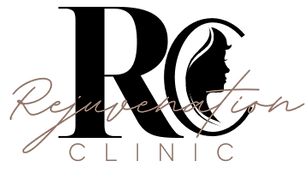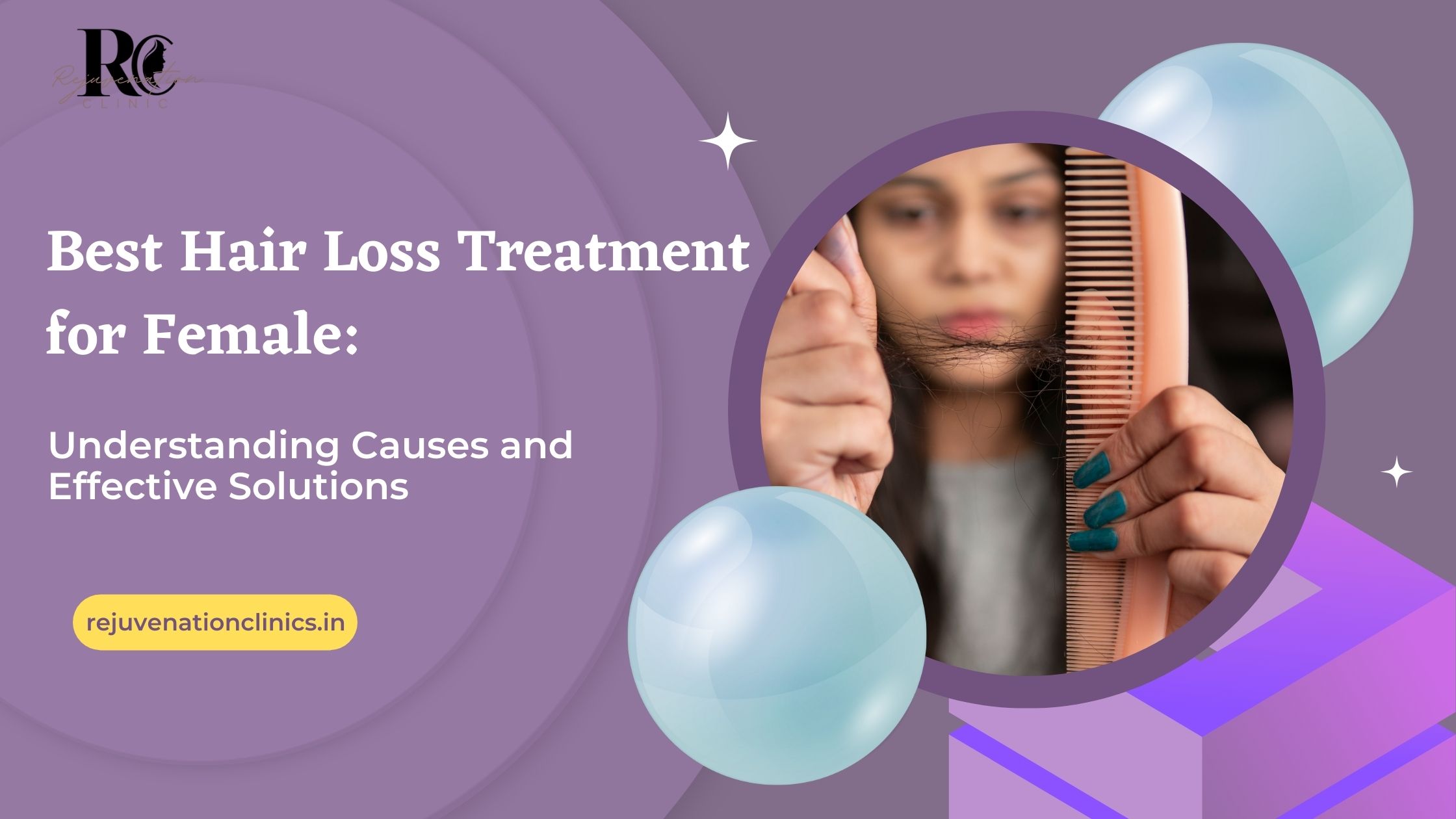Hair loss affects millions of women worldwide, yet it remains one of the most emotionally challenging conditions to face. When you notice more strands on your pillow or in the shower drain, it’s natural to feel concerned about your appearance and self-confidence. The good news is that understanding the root causes of female hair loss can lead you to effective treatment options that restore both your hair and your peace of mind.
Female hair loss differs significantly from male pattern baldness, both in its patterns and underlying causes. While men typically experience receding hairlines and crown thinning, women often notice diffuse thinning across the entire scalp or widening of their natural part. This comprehensive guide explores the most common causes of hair loss in women and reveals the best hair loss treatment for female patients available today.
Understanding Female Hair Loss: More Than Just Genetics
Androgenetic Alopecia: The Most Common Culprit
Androgenetic alopecia, also known as female pattern hair loss, affects approximately 30 million women in the United States alone. This hereditary condition occurs when hair follicles become sensitive to dihydrotestosterone (DHT), a hormone that shrinks follicles over time. Unlike male pattern baldness, women rarely experience complete baldness but instead notice gradual thinning that becomes more pronounced with age.
The condition typically manifests as:
- Widening of the center part
- Decreased hair density on the crown
- Thinning at the temples
- Overall reduction in hair volume
Hormonal Fluctuations and Hair Health
Hormonal changes play a crucial role in female hair loss. Estrogen and progesterone help keep hair in its growth phase, while testosterone can contribute to hair loss when levels become imbalanced. Several life stages can trigger hormonal hair loss:
Pregnancy and Postpartum: During pregnancy, elevated estrogen levels keep more hair in the growth phase, resulting in thicker, fuller hair. However, after delivery, hormone levels drop dramatically, causing many women to experience significant hair shedding 2-6 months postpartum.
Menopause: As estrogen and progesterone levels decline during menopause, the effects of testosterone become more pronounced. This hormonal shift can accelerate hair thinning and loss.
PCOS (Polycystic Ovary Syndrome): Women with PCOS often have elevated androgen levels, which can cause both hair loss on the scalp and excessive hair growth in other areas.
Nutritional Deficiencies: Hidden Causes of Hair Loss
Your hair follicles require specific nutrients to produce strong, healthy strands. Deficiencies in key vitamins and minerals can significantly impact hair growth:
Iron Deficiency: Iron deficiency anemia is particularly common in women and can cause diffuse hair loss. Even low iron levels without anemia can affect hair growth.
Vitamin D: Research shows that vitamin D receptors are present in hair follicles, and deficiency may contribute to hair loss conditions like alopecia areata.
B Vitamins: Biotin, folate, and B12 deficiencies can all impact hair health and growth rates.
Protein: Hair is primarily made of protein, so inadequate protein intake can lead to weak, brittle hair that breaks easily.
Stress and Lifestyle Factors
Chronic stress can trigger a type of hair loss called telogen effluvium, where hair follicles prematurely enter the resting phase. Physical stress from illness, surgery, or extreme weight loss can also cause temporary hair loss. Additionally, certain hairstyling practices, such as tight ponytails, braids, or frequent heat styling, can damage hair and lead to traction alopecia.
Professional Treatment Options: Finding the Best Hair Loss Treatment for Female Patients
PRP (Platelet-Rich Plasma) Therapy
PRP therapy has emerged as one of the most effective non-surgical treatments for female hair loss. This innovative procedure uses your own blood’s growth factors to stimulate hair follicles and promote new growth.
How PRP Works: A small amount of blood is drawn and processed to concentrate the platelets, which are then injected into the scalp. The growth factors in platelets help revitalize dormant hair follicles and improve hair density.
Advanced PRP with Dermapen 4: Some clinics now combine PRP with microneedling using the Dermapen 4 device. This combination enhances the absorption of growth factors and stimulates the scalp’s natural healing response, potentially improving results.
Treatment Timeline: Most patients require 3-4 initial sessions spaced 4-6 weeks apart, followed by maintenance treatments every 6-12 months.
Growth Factor Treatments
Growth factor therapy represents a cutting-edge approach to hair restoration. These treatments use concentrated growth factors derived from stem cells or other sources to stimulate hair follicle regeneration.
Benefits of Growth Factor Therapy:
- Promotes cellular regeneration
- Increases hair follicle size
- Extends the growth phase of hair
- Improves overall scalp health
HydraFacial Keravive: Scalp Health Revolution
The HydraFacial Keravive treatment focuses on creating optimal scalp conditions for hair growth. This three-step treatment cleanses, exfoliates, and nourishes the scalp while delivering peptides and growth factors directly to hair follicles.
The Keravive Process:
1. Cleanse and Exfoliate: Removes dead skin cells and sebum buildup
2. Hydrate and Nourish: Delivers peptides and growth factors
3. Extend and Enhance: Take-home spray continues treatment benefits
Topical Treatments and Medications
Several FDA-approved topical treatments can help slow hair loss and promote regrowth:
Minoxidil: Available in 2% and 5% formulations, minoxidil is the only FDA-approved topical treatment for female pattern hair loss. It works by increasing blood flow to hair follicles and extending the growth phase.
Prescription Treatments: Dermatologists may prescribe other topical treatments or oral medications based on the underlying cause of hair loss.
Lifestyle and Nutritional Approaches
Optimizing Your Diet for Hair Health
A well-balanced diet rich in hair-supporting nutrients can significantly impact hair growth and strength:
Protein Sources: Include lean meats, fish, eggs, legumes, and nuts to provide the building blocks for hair protein.
Iron-Rich Foods: Consume spinach, red meat, lentils, and fortified cereals to support healthy iron levels.
Omega-3 Fatty Acids: Found in fatty fish, walnuts, and flaxseeds, these healthy fats support scalp health and add shine to hair.
Antioxidant-Rich Foods: Berries, colorful vegetables, and green tea help protect hair follicles from oxidative stress.
Stress Management and Hair Health
Implementing stress-reduction techniques can help prevent stress-related hair loss:
- Regular exercise to reduce cortisol levels
- Meditation or mindfulness practices
- Adequate sleep (7-9 hours per night)
- Engaging in hobbies and social activities
Gentle Hair Care Practices
Adopting hair-friendly styling habits can prevent further damage:
- Use a wide-tooth comb on wet hair
- Avoid tight hairstyles that pull on the scalp
- Limit heat styling and use heat protectants
- Choose gentle, sulfate-free shampoos
- Sleep on silk or satin pillowcases to reduce friction
When to Seek Professional Help
While some hair loss is normal (losing 50-100 hairs per day), certain signs indicate the need for professional evaluation:
- Sudden increase in hair shedding
- Noticeable thinning or bald patches
- Hair loss accompanied by scalp irritation or inflammation
- Family history of hair loss
- Hair loss following medication changes or medical procedures
A dermatologist or trichologist can perform a thorough evaluation, including blood tests to check for underlying conditions and determine the best hair loss treatment for female patients based on individual needs.
Creating Your Personal Hair Recovery Plan
Successful hair loss treatment often requires a multi-faceted approach. The most effective treatment plan might include:
1. Professional Assessment: Start with a consultation to identify the underlying cause
2. Medical Treatments: Consider PRP therapy, growth factor treatments, or prescription medications
3. Nutritional Support: Address any deficiencies through diet or supplements
4. Lifestyle Modifications: Implement stress management and gentle hair care practices
5. Regular Monitoring: Track progress and adjust treatments as needed
Embracing Hope and Taking Action
Hair loss can feel overwhelming, but remember that numerous effective treatments are available. The key is identifying the underlying cause and working with qualified professionals to develop a personalized treatment plan. Whether you choose advanced therapies like PRP with Dermapen 4, growth factor treatments, or HydraFacial Keravive, the best hair loss treatment for female patients is one that addresses your specific needs and goals.
Don’t let hair loss define your confidence or self-image. With the right combination of professional treatments, lifestyle changes, and patience, you can work toward healthier, fuller hair. Take the first step by consulting with a qualified professional who can assess your condition and recommend the most appropriate treatment options for your unique situation.
Remember, hair regrowth takes time, and results vary from person to person. Stay committed to your treatment plan, maintain realistic expectations, and celebrate small improvements along the way. Your journey to healthier hair begins with understanding your options and taking action today.

